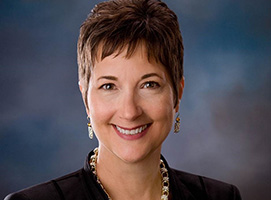enrollment
Meeting today’s college enrollment goals by engaging all departments in enrollment efforts
Co-written by Jim Scannell
This post is based on an article in the current issue ofUniversity Business
Enrollment leadership today requires a coordinated campus team to address and respond to evolving and emerging internal challenges as well as shifting external markets and forces. Pressures that affect enrollments, and especially yield rates, are a function of several of today’s realities: significant demographic shifts, the proliferation of applications per student, increased price sensitivity, and changing methods of delivery.
Understanding the threats and challenges
- American Freshmen: Fifty Year Trends 1996-2015 shows the steady increase in the number of applications submitted by individuals. Since 2012 the percentage of students who submit six or more applications has increased to 36.3 percent, up from 27.5 percent just three years earlier. In 2015, 7.6 percent of students reported submitting eleven or more applications.
- Between 2010 and 2014, overall undergraduate enrollment declined by about 800,000 students (NCES, 2016). In addition, the number of Caucasian students is expected to decline at more than double the expected rate of decline of African American students, and the rise in the Asian student population outpaces the anticipated increase in Hispanic graduates by more than 2 to 1.
- The demographic pattern also marks stark differences among families’ ability to pay for college. The College Board reports that although the average White/Non-Hispanic income was $76,658 in 2014, African American and Hispanic families earned about 42 percent less, at $43,151 and $45,114 respectively.
- Price sensitivity will continue to be a factor. The College Board’s most recent Trends in Higher Education Reportreveals that undergraduate borrowing has declined by 18 percent since 2010 (inflation-adjusted dollars). Some experts suggest that borrowing for post-secondary education may well have reached its upper limit.
- Educational platforms have changed, and brick and mortar institutions are “no longer the only game in town.” From accelerated programs to MOOCs, and from non-credit classes to YouTube videos, students can choose their learning environment, cost, and delivery mode.
Collaborative leadership: A critical piece of the puzzle
So how does the enrollment officer help to ensure that the institution has the right mix of academic programs; delivery methods; student life experiences; price position; and recruiting and awarding strategies that will attract the sufficient number of talented students needed to meet fiscal and enrollment goals, while sustaining and advancing the college’s mission? Cross-campus engagement featuring an “institution first” culture, which encourages colleagues to think beyond their own departments and programs, is a critical piece of the puzzle.
John McCloskey, vice president for enrollment management at Alvernia University (AU), recalls how leadership on campus paved the way for meeting enrollment challenges, “In 2015, trustees established an ad-hoc committee of the board (including faculty members) to study and develop recommendations regarding undergraduate enrollment initiatives to drive enrollment growth of new and returning students. The committee researched market trends and employment projection data and ultimately developed a list of new majors, suggestions for renewal of select academic majors, as well as several athletic programs for the administration to complete feasibility studies for future programming. Engaging the trustees and faculty in the conversation regarding the external enrollment challenges was productive and opened the door for subsequent faculty and staff discussions.”
Strategic Enrollment Planning Executive Forum, April 26-27, 2017
How can your campus leaders work more closely together to achieve college enrollment goals and institutional objectives? And how can you adapt the culture of the institution to include cross-campus engagement? Invite your senior leadership team to RNL’s Executive Forum in Chicago to kick off a collaborative, strategic enrollment plan that assesses high-impact strategies that cross divisional lines. Together, we’ll discuss how to navigate your campus through the academic, demographic, and economic challenges ahead using cross-divisional strategies. Learn more.
